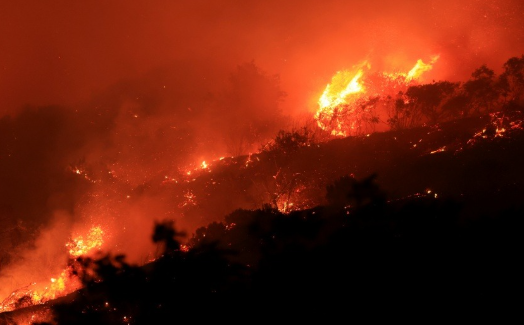Air Pollution from Wildfires Causes Millions of Deaths
A recent study has revealed alarming statistics about air pollution from landscape fires, conducted by Australian researchers, it marks the severe health impacts worldwide. Over 1.5 million deaths occur annually due to this pollution, which emphasizes the urgent need for action, especially in vulnerable regions.
Key Findings
The study indicates that 1.53 million deaths per year are linked to air pollution from wildfires. This data covers the period from 2000 to 2019. The majority of these deaths, over 90%, are in low and middle-income countries. Regions most affected include sub-Saharan Africa, Southeast Asia, South Asia, and East Asia.
Health Impacts
The research identifies specific health issues caused by wildfire-related air pollution. Heart disease accounts for approximately 450,000 deaths. Respiratory diseases contribute to around 220,000 fatalities. Fine particulate matter from wildfires is responsible for 77.6% of these deaths. Surface ozone exposure contributes to 22.4% of the fatalities.
The study links the increasing frequency and intensity of wildfires to climate change. As wildfires become more common, the health risks associated with air pollution are expected to rise. This trend marks the urgent need for comprehensive strategies to mitigate these effects.
Recommendations for Action
The researchers advocate for high-income countries to assist vulnerable nations. Financial and technological support is crucial to help manage health risks. This assistance can also address the inequalities in death rates caused by wildfire pollution. Collaborative efforts are essential to reduce the health impacts of landscape fires.
Countries in sub-Saharan Africa report the highest death rates linked to landscape fires. This region faces important challenges in managing air quality and health outcomes. Strategies tailored to local conditions are necessary to combat these issues effectively.
Important Facts for Exams:
- Sub-Saharan Africa: This region includes countries located south of the Sahara Desert. It faces important challenges, including poverty and health disparities. It is particularly affected by air pollution from wildfires.
- Fine Particulate Matter: Fine particulate matter, or PM2.5, consists of tiny particles in the air. These particles can penetrate deep into the lungs. They are linked to severe health issues, including heart and respiratory diseases.
- Surface Ozone: Surface ozone is a harmful air pollutant formed by chemical reactions. It occurs when sunlight interacts with pollutants from vehicles and industrial facilities. It poses important health risks, especially in urban areas.
Month: Current Affairs - November, 2024
Category: Environment Current Affairs


